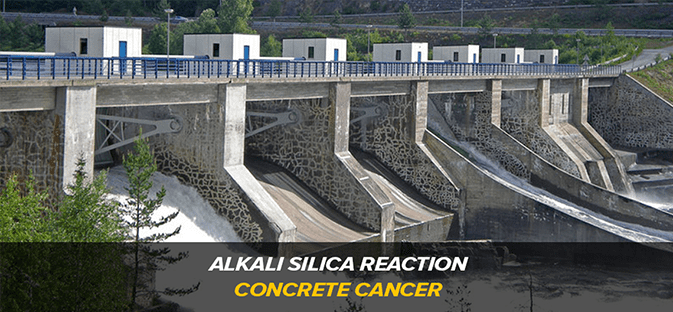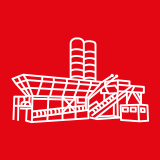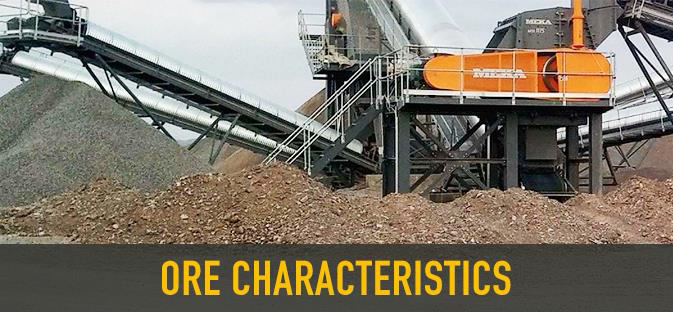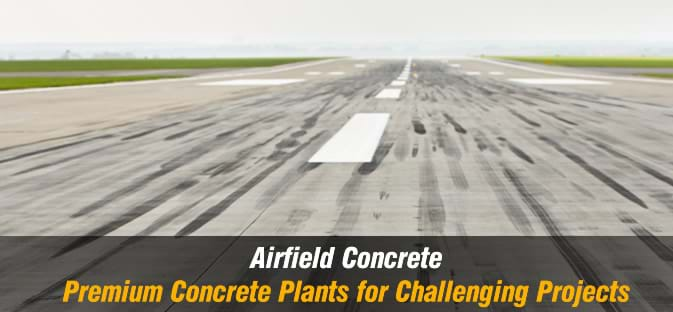Case Study: Alkali Silica Reaction - Concrete Cancer

Unclear fracture occurrences were reported on structures in 1920, California, USA. Although the materials met conforms to the standards, it was declared after the construction cracks were starting to form on the in a short period of time. It was described that such cracks were the result of a chemical reaction, which was later called the Alkali-Silica Reaction in 1940. Although the alkali-silica reaction is not widely known in the building industry the effect on the structures is very important. The alkali-silica reaction is a complex chemical reaction, which affects the durability of and damages many reinforced structures.
The alkali-silica reaction (ASR), is the reaction of reactive silica in aggregates and solution of hydroxyl ions within voids. This reaction causes the formation of a gel which expands with the effect of moisture in . The increase in volume due to the swelling leads to cracks in the ASR is a reaction between the alkali hydroxides in Portland cement and some minerals present in the aggregate (such as opal, chert, chalcedony, trim it, cristobalite and quartz).
Without any reactive aggregate contains reactive silica, high porosity solution of alkalinity and sufficient moisture, there will be no expansion due to ASR. The amount of gel formed in the depends on the type, amount and concentration of alkali hydroxide. No seriously dangerous effects have been recorded due to ASR on that remains dry during its service life. ASR occurs in with relative humidity above 80%. Low water/cement ratio , additional cement, mineral additive or if the permeability is reduced in any way, then moisture penetration into the and moisture circulation within the s reduced. Therefore, the spread of alkalis is also reduced. Increasing the temperature increases the reaction rate. The majority of the aggregates generate more reactivity at higher temperatures.
ASR takes place in three stages:
- Dissolution of reactive silica
- .Formation of alkali-silica gel
- Expansion of alkali-silica gel by absorbing of water

SYMPTOMS OF ALKALI SILICA REACTION
ASR symptoms can be determined with careful inspection and examination on The most important symptom showing that the reaction is occurring in is the map cracks on the surface of construction. The expansion, cracks, surface deposits, surface cracks, explosions and color changes are the most typical indications of ASR presence in .


The pattern of the ASR cracks is quite different from the cracks formed by various loads acting on the structure.
Since ASR deterioration occurs in time, there is almost no risk of collapsing in the short run. Salt water, sulphate effects, frost and freezing accelerate and increase the effects of dissolution.
PRECAUTIONS AGAINST ALKALI SILICA REACTION
Determination of Reactive Aggregates and the Aggregate Selection:
Not all types of aggregates support the alkali silica reaction. In many cases it is economical to use reactive aggregate in . When a new aggregate source is used, petrographic examination is carried out according to ASTM C295.
There are several precautions that can be taken in situations where the use of a potentially reactive reagent is compulsory:
The density of reactive silica can be reduced by mixing the labile aggregate with non-reactive aggregate. However, if this method is applied to aggregates containing components that react quickly, such as opal, the results might be worse.
It is possible to get rid of labile aggressor when it was in the stone quarry during the production, but applying this process successfully is often difficult.
The separation method in heavy media is a successful method when the reactive component is at low density as opal cherts, but it increases the cost of the aggress
Washing and scrubbing may be beneficial in reducing the reactive components of the aggregate. If the aggregate is supplied from the sea, the washing method allows the sodium and potassium salts to be washed away from the aggregate.
Potential reactivity may be reduced by chemical treatment of the aggregate
Reduction of Alkali and Cement Selection:
The alkaline content of the components can be limited to minimize the potential damage of the ASR.
Cement is the main source of alkaline in . However, fly ash with an alkali content of more than 5% increases the level of alkali in the Some chemical additives and mixing water (especially salty water) increase the alkali content.
It is also necessary to take into account external alkalis from the sea or the de-icing salts will be exposed during its service life.

Moisture and Permeability Reduction:
High humidity is absolutely necessary for the continuation of ASR. the gel resulting from the reaction will swell by absorbing water and cause expansion of the materi Keeping materidry and away from the water is an effective way to stop the reaction. Buildings that are open to the atmosphere such as airport runways, taxiways, aprons, road pavements, structures that contact with water such as bridges, dams are more likely to be exposed to ASR. Decreasing the permeability in cmateri slows the formation of the reaction because it restricts ion movement. However, the impermeability of the materi also has negative effects.

Using of Mineral Additive:
The use of mineral admixtures improves mortar and pressure resistance, void formation and permeability. It is known that mineral admixtures such as fly ash and silica fume reduce ASR expansions and also reactive aggregate powders reduce the expansion from 95% to 35%. In addition to being economical, the use of mineral admixtures also has technical advantages in terms of energy conservation and protection of the environment.
Using of Chemical Additives.
Some types of chemical additives potentially;
1.Can stop or reduce the dissolution of the silica.
2.May stop the formation and character of silica gel.
3.May reduce gelatin expansion
Sustainability of strength and durability is an important characteristic in the quality of ASR causes , reinforced and construction elements to expand, causing their functions to be lost before reaching their expected service life. Labile aggregate should not be used if there is no obligation, in some situation the use of mineral admixtures at certain ratios in designs can be considered as a solution to reduce the expansion caused by ASR.
Vural MERCAN





